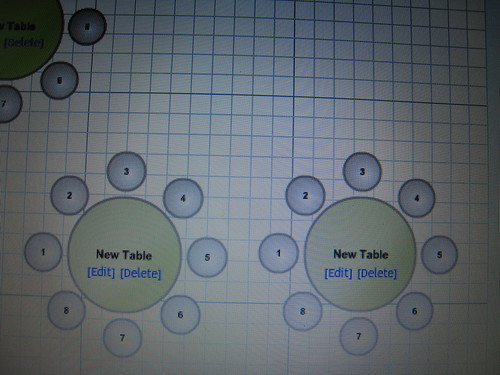Before going into grad school, many many years ago, I had to take three of the basic GRE tests: Math, English, Critical Thinking.
I did okay on the Math. Above average on the English. And somehow got in the 99th percentile on Critical Thinking. Most of the questions on the test were things like, "Harry can't sit next to Sue. But Sue has to sit with Carl." It never seemed like the most useful skill in the world and the GRE administrators must have agreed because that particular test was discontinued the next year.
Now, working on the seating plan for the reception, my "critical thinking" skills are finally coming in handy. Between my 99th percentile aptitude for this sort of thing and several useful if imperfect internet seating tools, this should be a breeze.
But real life seating arrangements don't have right answers. Only different gradations of wrong answers. So... if Harry can't sit next to Sue and Sue has to sit with Carl... but Harry doesn't know anyone but Carl. Can Harry sit with strangers? Can you split up Sue and Carl? Now, when you say Harry can't sit next to Sue, does that mean just next to, or they can't sit at the same table at all?
And really, the problem has less to do with individuals and more to do with groups. The family groups. The work groups. The improv group groups. These groups are rarely divisible by perfect 8 seat tables. And it seems unavoidable to have empty seats and extra tables just to make everything work. It'll never all click together perfectly like some manufactured quiz question.
Monday, August 23, 2010
Subscribe to:
Post Comments (Atom)


No comments:
Post a Comment